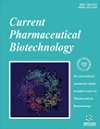
Full text loading...
We use cookies to track usage and preferences.I Understand

Metabolic Syndrome (MetS) refers to the co-occurrence of a constellation of metabolic diseases in the same individual, such as abdominal/visceral obesity, insulin resistance or diabetes, alterations in the lipid profile (dyslipidemias), and/or hypertension, which promotes the development of other cardiometabolic and hepatic diseases. Dyslipidemia and metabolic dysfunction-associated steatotic liver disease (MASLD), previously termed nonalcoholic fatty liver disease (NAFLD), are common MetS pathologies closely related to lipid metabolism. Alterations in the metabolism of proteins, carbohydrates, and lipids, caused by an excessive intake of nutrients and abnormal accumulation of body fat, which promotes chronic low-grade inflammation, are pivotal aspects of MetS development. To avoid damage caused by lipid overaccumulation, the transcription factors responsible for regulating lipid homeostasis and inflammation (named in this work master regulators) must modify their regular activity however, the high adiposity established for long periods causes the appearance of insulin resistance (the MetS triggering factor most widely accepted in the literature). Fortunately, scientific evidence suggests that the abnormal activity of these regulators can be conveniently modulated by distinct species of bioactive lipids, among which unsaturated fatty acids stand out, offering new alternatives for treating MetS. Therefore, this work aims to provide a general overview of scientific evidence that supports the mechanisms of action and the effective modulation by bioactive lipids of some master lipid-metabolism-and-inflammation regulators in diverse aspects of MetS

Article metrics loading...

Full text loading...
References


Data & Media loading...